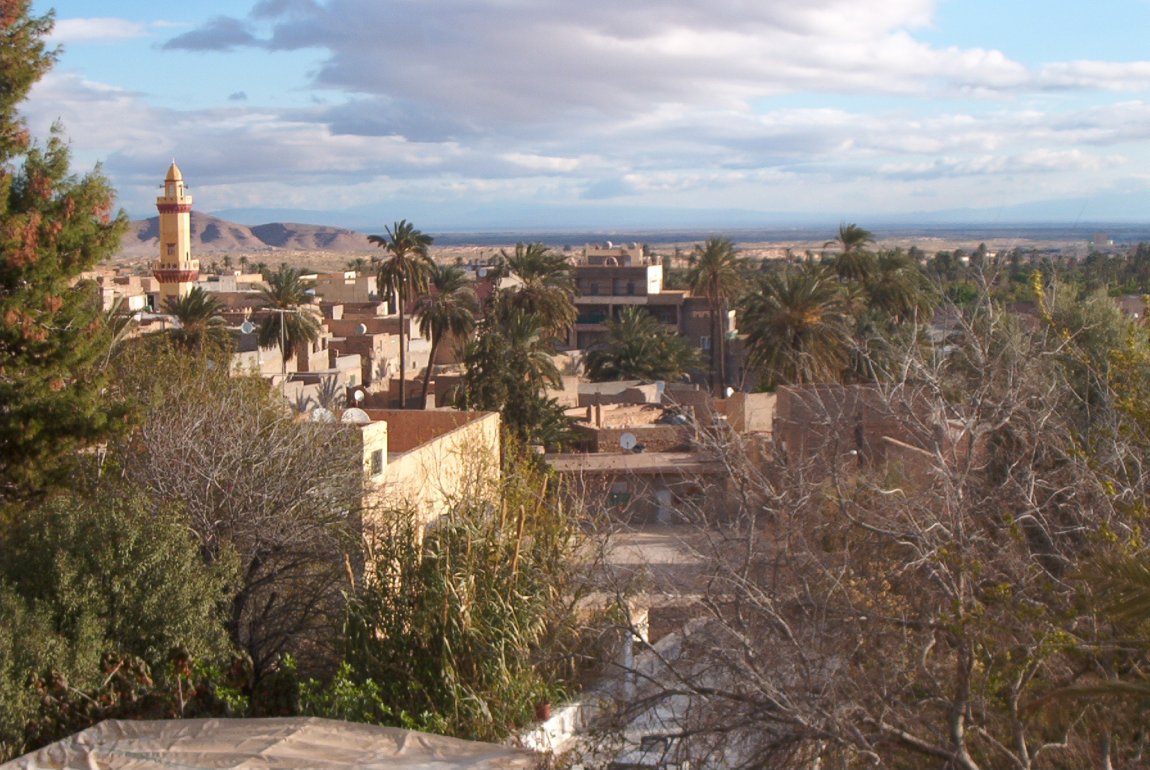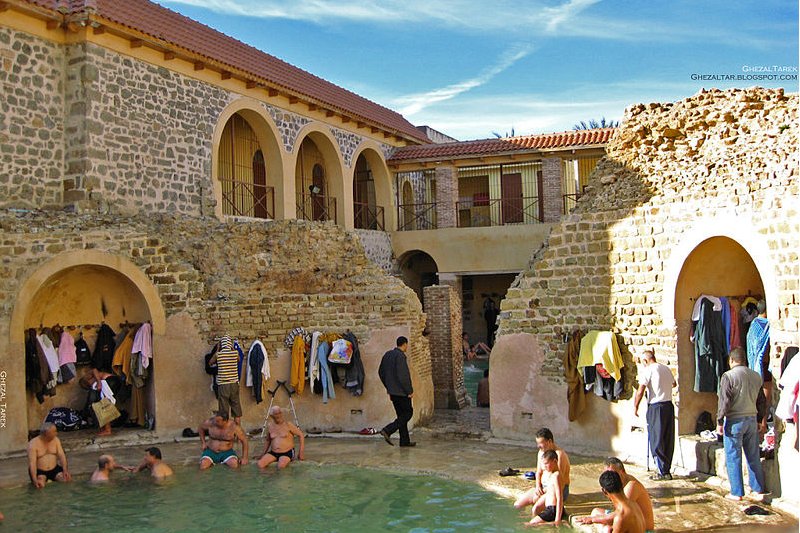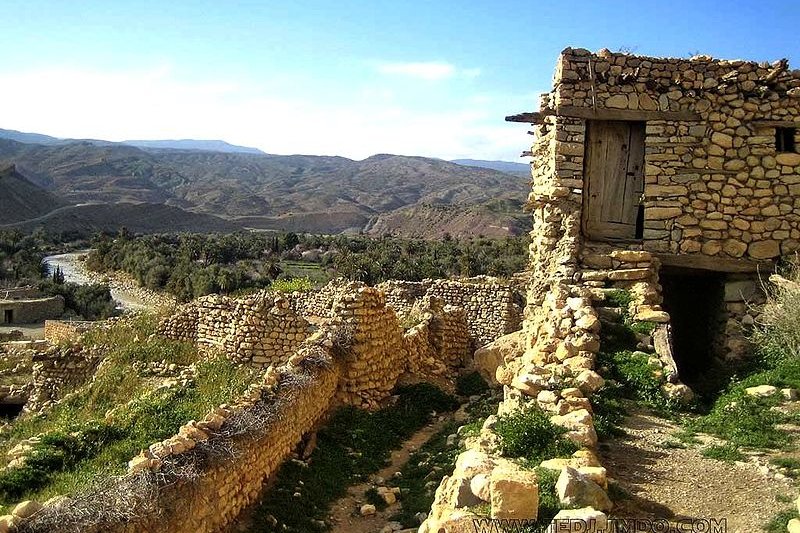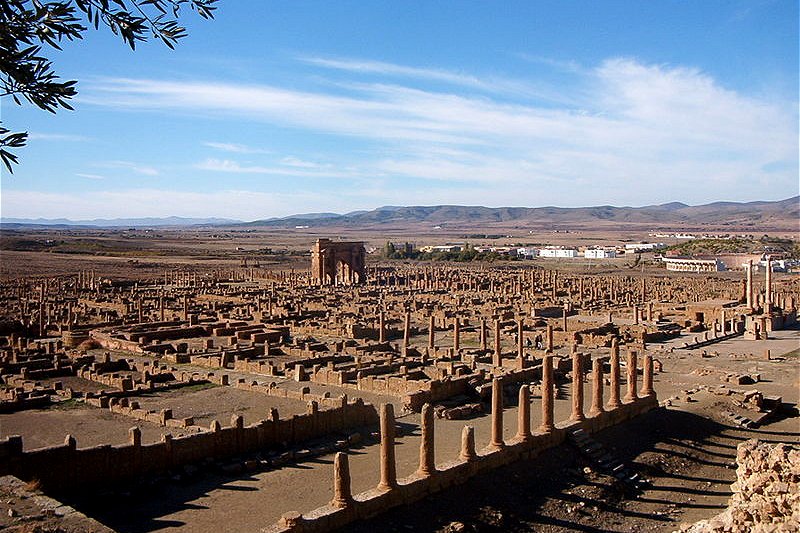 Bousaayed in Algeria
Bousaayed in AlgeriaSource: https://commons.wikimedia.org/wiki/File:Bousaayel.jpg
Author: Yelles

Algeria is a major country on the African continent. Covering 2,381,741 sq km (919,595 sq mi), Algeria is the second biggest country in Africa - after Sudan - and the biggest facing the Mediterranean Sea. It is also the 11th biggest in the world. For such a big country, its population is quite low, around 35.5 million people (2011 estimate). The capital and biggest city is Algiers.
Algeria borders Tunisia to the northeast, Libya to the east, Niger to the southeast, Western Sahara, Mauritania and Mali to the southwest and Morocco to the west. Its GDP (nominal) in 2010 was $159 billion, or $4,478 per capita, and its per capital GDP at purchasing power parity is $7,104. The official currency is the Algerian dinar. Traffic drives on the right side of the road. The IDD code is 213. The electricity is 220V 50Hz using the European standard CEE-7/7 sockets.
Algeria is believed to have been named after the city of Algiers. The country was settled by the Carthaginians around 1,000 BC, until the Berbers fought the Carthaginians in the Punic Wars and established Berber kingdoms, of which the most notable is Numidia.
Places in Algeria on this website
 Major Cities in Algeria
Major Cities in Algeria
- Algiers - capital
- Annaba
- Batna
- Bechar
- Constantine
- Oran
- Sétif
- Tamanrasset
 Places of Interest in Algeria
Places of Interest in Algeria
- El-Oued
- Hippo Regius
Categories of Sights in Algeria
 Roman Bath of Hammam Essalhine, Algeria
Roman Bath of Hammam Essalhine, AlgeriaSource: https://commons.wikimedia.org/wiki/File:La_piscine_circulaire_Hammam_essalhine_khenchela_aures.jpg
Author: Ghezaltar

Algeria was occupied by Roman forces from 200 BC until the fall of the Western Roman Empire in AD 476, giving the Berbers control of the country until they were ousted by the Byzantine Empire under Emperor Justinian I.
During the Middle Ages, Algeria was once again under the control of the Berbers, who were themselves divided into several tribes each exerting its own independence. Islam was brought to Algeria by Muslim Arabs in the mid-7th century. In the 16th century, Spain under its Catholic monarchs conquered several towns along the coast of North Africa but in most cities, held on to power for less than a century.
From 1517, Algeria came under the rule of the Ottoman Empire, which conquered the territories previously occupied by Spain. The Ottomans established Algeria's modern boundaries. Piracy preying on American vessels in the Mediterranean resulted in two wars fought with the United States, in 1801-05 and 1815.
 Khirenne Khenchela, Algeria
Khirenne Khenchela, AlgeriaSource: https://commons.wikimedia.org/wiki/File:Khirenne-9.jpg
Author: Ghezaltar

France invaded and captured Algiers in 1830, leading to the French occupation of Algeria, which lasted until the early 20th century. During that time, France systematically integrated Algeria, making it part of France. Thousands of French people emigrated to settle in Algeria. In 1954, following the Algerian War of Independence, the French president Charles de Gaulle offered Algerians a choice, the result of which was a landslide vote of complete independence from France. Nonetheless some 10% of the population fled Algeria to see a new life in France.
Subsequent to independence, Algeria went through a long period of civil war which is only gradually subsiding in recent decades, and order is gradually being restored in the country.
Planning your visit to Algeria
The Houari Boumediene Airport (ALG) is the international airport serving Algiers. It is located about 17 km from downtown Algiers. The airport receives regular scheduled flights from major European airlines including Air Berlin, Air France, Alitalia, British Airways, Iberia and Lufthansa, among others. The national flag carrier of Algeria, Air Algerie, has regular scheduled flights between Algiers and many destinations in Europe particularly cities in France. Ruins of Timgad, Algeria
Ruins of Timgad, AlgeriaSource: https://commons.wikimedia.org/wiki/File:Timyel.jpg
Author: Yelles

 Latest updates on Penang Travel Tips
Latest updates on Penang Travel Tips

Copyright © 2003-2025 Timothy Tye. All Rights Reserved.

 Go Back
Go Back